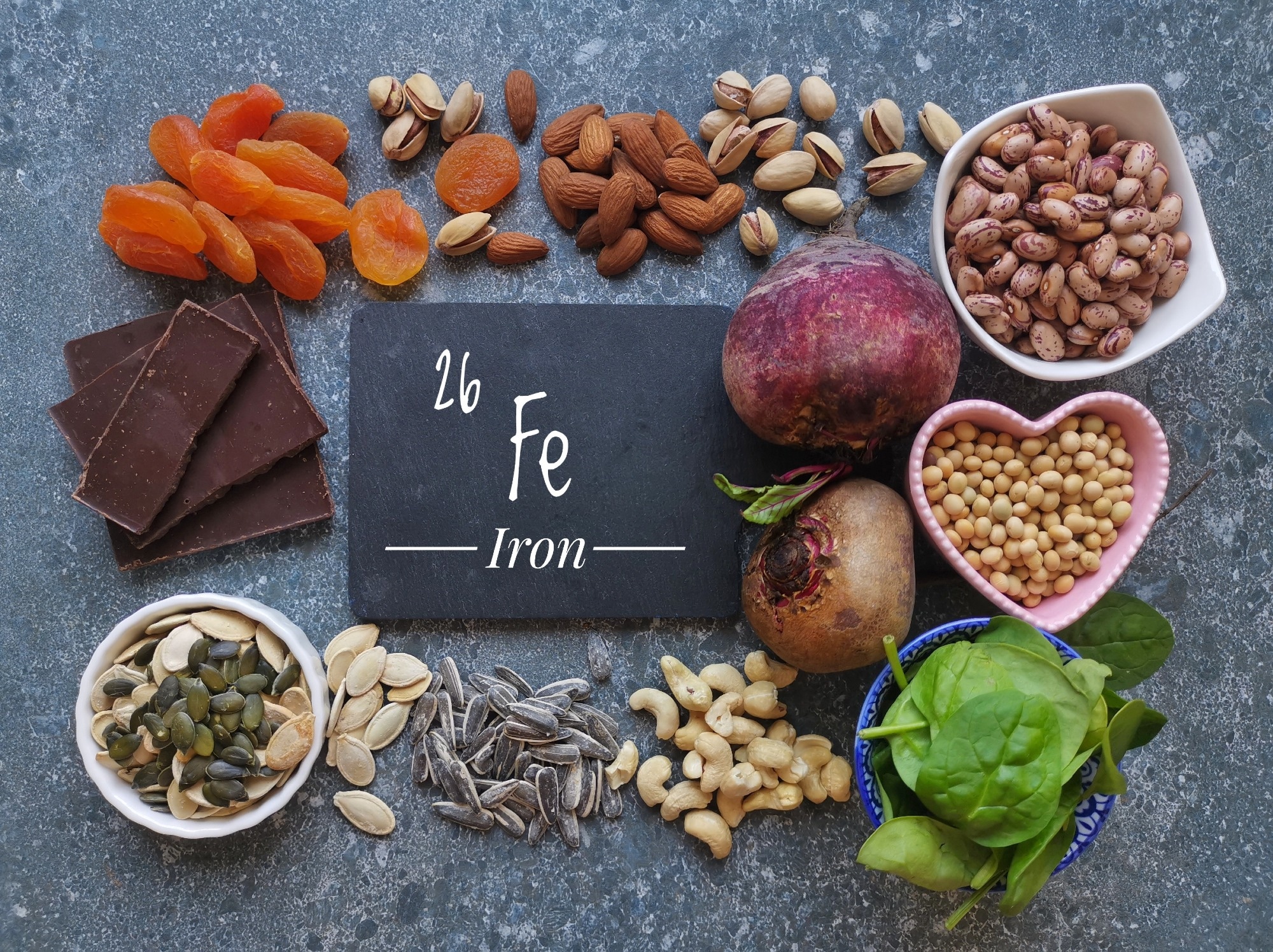In a recent study published in the Nutrients journal, researchers discussed iron nutrition among preschoolers residing in high-income countries.
 Study: Iron Nutrition of Pre-Schoolers in High-Income Countries: A Review. Image Credit: DanijelaMaksimovic/Shutterstuck.com
Study: Iron Nutrition of Pre-Schoolers in High-Income Countries: A Review. Image Credit: DanijelaMaksimovic/Shutterstuck.com
Background
Iron deficiency affects almost 25% of the world's population, with children aged under five years being particularly vulnerable. During the preschool age between two and five years, children have high nutritional requirements, but they often do not meet the recommended dietary guidelines.
Early onset of iron deficiency can have serious consequences on a child's health, including compromised immunity and hindered cognitive and motor development. The importance of iron nutrition during early childhood for public health is significant, although there is still limited understanding of the topic.
Research on iron nutrition among preschoolers from high-resource countries
Most studies examining the dietary iron consumption of children aged between two and five years found that the prevalence of inadequate consumption ranged between less than 1% and 66%.
A recent study found that 66% of children in New Zealand are at risk of inadequate iron intake, which is significantly higher than the reported prevalence of less than 1% in the US. However, it's important to note that there were differences in the methodology used in both studies.
The occurrence of depleted iron stores varied between countries, with rates ranging from 7.4% to 31% among preschoolers in the US and UK, respectively. Iron deficiency anemia (IDA) and iron deficient erythropoiesis (IDE) had varying prevalence rates across different countries.
The prevalence of IDE ranged from 3% in the US to 9% in Iceland, while the prevalence of IDA ranged from less than 1% in the US to 4.3% in New Zealand.
Non-dietary factors linked to iron status or iron consumption
Non-dietary factors that affect iron intake include socio-demographic characteristics like sex, age, ethnicity, family structure, and socio-economic status. The team noted inverse correlations between iron intake and preschoolers and maternal education and age.
On the other hand, female preschoolers and those from families having two or fewer children tend to have higher iron intake. Also, young children from disadvantaged families are at a higher risk of iron deficiency. Studies have shown that males and preschoolers from low-income households have lower serum ferritin (SF) concentrations.
Relationship between dietary quality and iron nutrition in preschoolers
Dietary factors that affect preschoolers iron intake
Iron-fortified formula and cereal intake are among the dietary factors that affect the iron intake of preschoolers in Europe. Iron from formula and cereal, while less bioavailable than haem iron, is still positively associated with iron intake in children due to its prevalence in their diets. Haem iron sources make up only 8% of the dietary iron intake for preschoolers in Australia.
More than half of the iron intake for children under eight years old in Australia is derived from cereals and cereal-based products like iron-fortified breakfast cereals and discretionary foods like cakes and biscuits.
Dietary trends and iron intakes of preschoolers
Few studies have explored the relationship between dietary trends and nutrient intake in children aged between two and five years in high-resource countries, despite the significance of understanding nutrient intake profiles. Only 12 diet quality studies that focused on preschool nutrient intakes and were published in English have reported patterns linked to iron intake.
Preschooler diets that include healthier foods, fruit juice, and non-iron and non-haem fortified foods like cheese and bread have a positive association with iron intake. A study also found that there is a negative correlation between iron intake and diets that consist mostly of sugary and processed foods, and the frequency of snacking.
Two distinct patterns of food consumption were identified among South Korean children wherein the nutritional quality index for iron was found to be lower in the mixed pattern compared to the rice-centered pattern.
Conclusion
In high-income countries, the prevalence of insufficient iron intake among preschoolers ranges from less than 1% to 66%, and depleted iron stores are found in 7.4% to 31% of cases. Non-dietary factors such as sex, age, household size, and maternal education have an impact on the iron intake of preschoolers.
Iron-fortified formula and cereal consumption, along with diverse dietary patterns, are linked to higher iron intake in preschoolers.
Assessing the sufficiency and accessibility of iron consumption among preschoolers can aid in creating and executing community-based interventions that aim to enhance iron intake, particularly bioavailable iron, and reduce the likelihood and impact of iron deficiency.
Additional research is needed to determine the sufficiency of absorbable iron in preschool-aged children.
-
Atkins, L., Spence, A. and Szymlek-Gay, E. (2023) "Iron Nutrition of Pre-Schoolers in High-Income Countries: A Review", Nutrients, 15(11), p. 2616. doi: 10.3390/nu15112616. https://www.mdpi.com/2072-6643/15/11/2616
Posted in: Child Health News | Medical Science News | Medical Research News | Medical Condition News
Tags: Anemia, Bread, Breakfast, Children, Diet, Education, Erythropoiesis, Food, Frequency, Fruit, immunity, Iron Deficiency, Nutrients, Nutrition, Public Health, Research

Written by
Bhavana Kunkalikar
Bhavana Kunkalikar is a medical writer based in Goa, India. Her academic background is in Pharmaceutical sciences and she holds a Bachelor's degree in Pharmacy. Her educational background allowed her to foster an interest in anatomical and physiological sciences. Her college project work based on ‘The manifestations and causes of sickle cell anemia’ formed the stepping stone to a life-long fascination with human pathophysiology.
Source: Read Full Article
